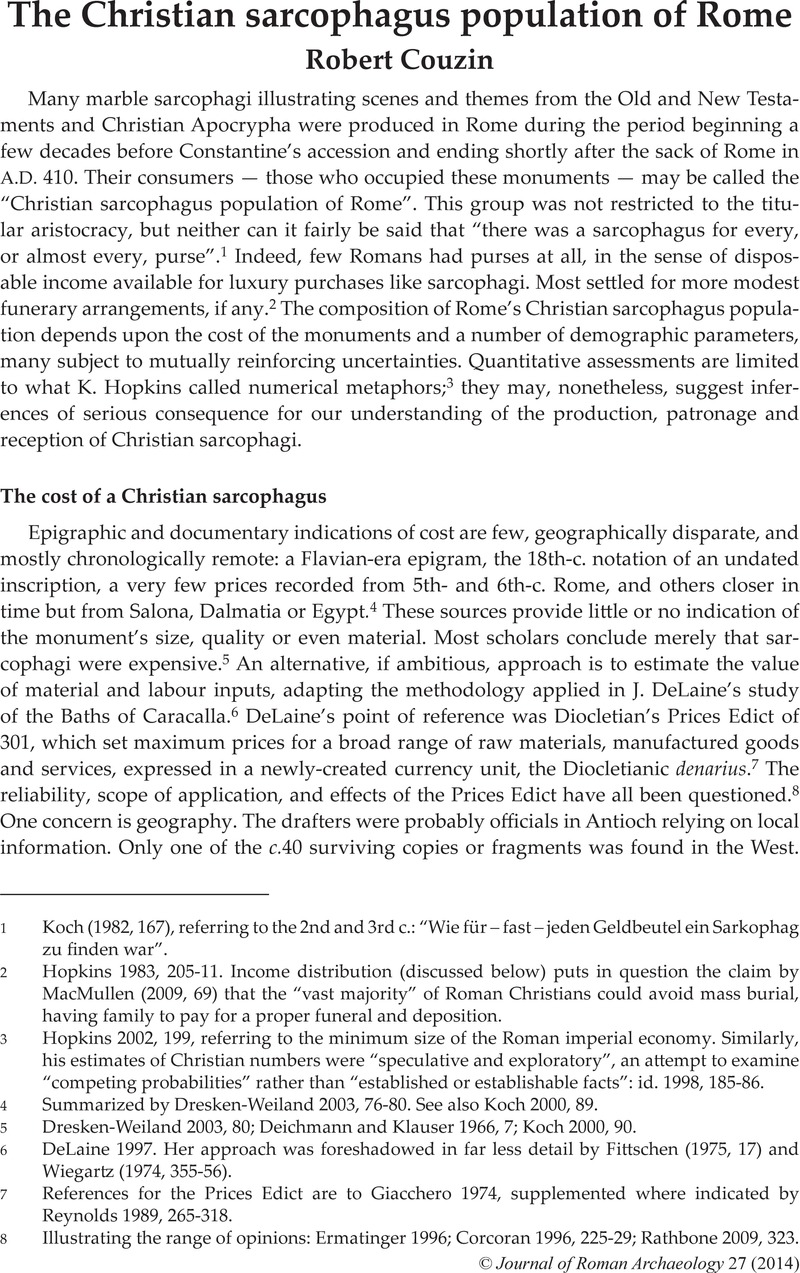Crossref Citations
This article has been cited by the following publications. This list is generated based on data provided by Crossref.
Couzin, Robert
2019.
WHERE DID ALL THE PAGANS GO? THE NON-CHRISTIAN SARCOPHAGI OF FOURTH-CENTURY ROME.
Papers of the British School at Rome,
Vol. 87,
Issue. ,
p.
145.



